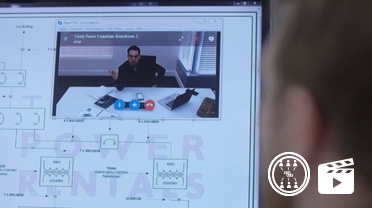- OUR APPROACH
-
COMMITTED TO YOUR SUCCESS
Our approach, developed over decades of experience, is fine-tuned to get the results you want.
We deliver concept-to-completion solutions, designed by temporary power specialists with access to the largest inventory of high-quality power generation and distribution equipment in North America.
-
- Equipment
-
RENTALS
From a wide range of diesel and natural gas generators to transformers, cable, light towers and more, our large rental fleet and extensive vendor network ensure we’ll have the temporary power equipment that your project requires — every time.

-
- Industries
-
INDUSTRIES WE SERVE
For nearly 20 years, we have been at work powering projects across Canada’s industrial sectors.
Select from this sampling of industries to learn how we can put our expertise to work for you.
VIEW ALL- Projects
- About
-
A PROUD HISTORY. A BRIGHT FUTURE.
From our inception in 1998, we have been building our team on a foundation of excellence. Our team members’ passion, expertise and commitment are what have allowed us to grow into a national company with projects across Canada.
Click on the links to learn more about our history, our team or our career opportunities.
- Blog
- Contact
-
Over the past two months, we’ve tackled communication and scheduling. For the third and final installment in our project management series, we’re addressing the not-so-invisible elephant in the room: budgets.
“One of the biggest things I have to take into account in making decisions is what it’s going to cost everyone,” explains Nick Foster, a senior project manager at Trinity Power. Determining what those costs will be, and then not adding to them, however, is no simple task. We asked our project management experts what tricks they use to get accurate estimates, and to keep their projects on budget.
Estimating: The Art and the Science
“Usually [the project managers at Houle] do our own estimating as well,” explains Pete Jensen, a project manager at Houle Electric. “So we’ll go through the drawings, do our own estimate, and if we’re successful [with our bid], we’ll run the project afterwards.”
Jensen stresses the importance of detailed information to accurate estimating. “Budgets really come down to the amount of time you have to spend on them, and the amount of information you get in the drawings,” he says. “So if you’ve got drawings that are well-planned and have a lot of details, and you’ve got the time to spend going through them all, then your budget should be really accurate.”
On top of drawings, Jensen tries to visit the site when possible. “If it’s an existing facility, it’s always nice if you can go in and do a visit of the site to see what kind of condition it’s in — if it’s a lot different than it looked like in the drawings.“
Of course, not every project offers the opportunity for a leisurely gathering of relevant information. For those that don’t, Jensen recommends building some leeway into the estimate: “The less design [information] and the less time you have, the more of a buffer you have to give it to make sure you’ve got yourself covered.”
Menno Huizinga, a project manager in the subsea technology industry, relies on team members for estimating. He highlights the importance of knowing how your estimators work: “I think it comes down to communication, and trusting the reliability of your team members,” says Huizinga. “How well do you know a team member — is he or she known to overestimate or underestimate? If so, you can adjust somewhat what the person is saying: if it will take an extra two weeks, for example.”
Stay on Top to Stay on Budget
When it comes to budgets, staying one step ahead is key. “It’s keeping track -always keeping on top of it,” says Foster. “You have to keep checking your task manager to make sure everything’s still on schedule and still on budget.”
Foster uses freight charges as an example. “With our style of business, we’re shipping equipment in and out of our yard,” he explains, “and it can get delayed on site for a couple of hours because workers decide to go on break. That kind of delay can cost an extra $200.”
Foster mitigates this risk by tasking a staff member with ensuring that things get shipped when they should.
Huizinga keeps budgets in check by using a spreadsheet system to track man hours. “We have an advanced timesheet system, where people do their timesheets daily or on a weekly basis,” he explains. “So I have a really good method to look at our costs in terms of labour.”
Frank Wemberley, a project director in the mining and oil & gas sectors, uses spreadsheets as well, to create earned value tables. These allow him to compare budgets and schedules across the various disciplines that are involved in the project.
“If you’re behind schedule, and over budget, that’s not good, because you’re spending money doing the wrong thing, or not making progress,” Wimberley simplifies. “Conversely, if you’re ahead of schedule and under budget, you’re good.”
The relationship between schedule and budget is represented in a, “two by two matrix, with the top right corner being good, and the bottom left corner being bad.” The matrix shows where the project is as a whole, and also where each discipline falls. “So if the project’s in the top right, overall you’re doing well,” explains Wimberley, “but there are always disciplines that are all over the place in the two by two matrix.”
Because the earned value spreadsheet is so involved, Wimberley says, “We’ve set up a standard in the office, so that we can just put the data in on a monthly basis.” That standard is a template that can be used for any size or type of project, saving project managers from having to spend valuable time creating a new one for every project.
Thinking and Action
Whether it’s communicating, scheduling or budgeting, project managers are working with a constant flow of information, which they have to analyze and organize into something they can use to make decisions.
With all the tools and tricks available to project managers (many of which we’ve covered in this series), the spreadsheets and analysis could go on forever.
But Foster has this piece of advice: “You can sit there and think about all the things you can’t control, but eventually, you have to make a decision.”
Related Articles
Subscribe for access to exclusive content
















